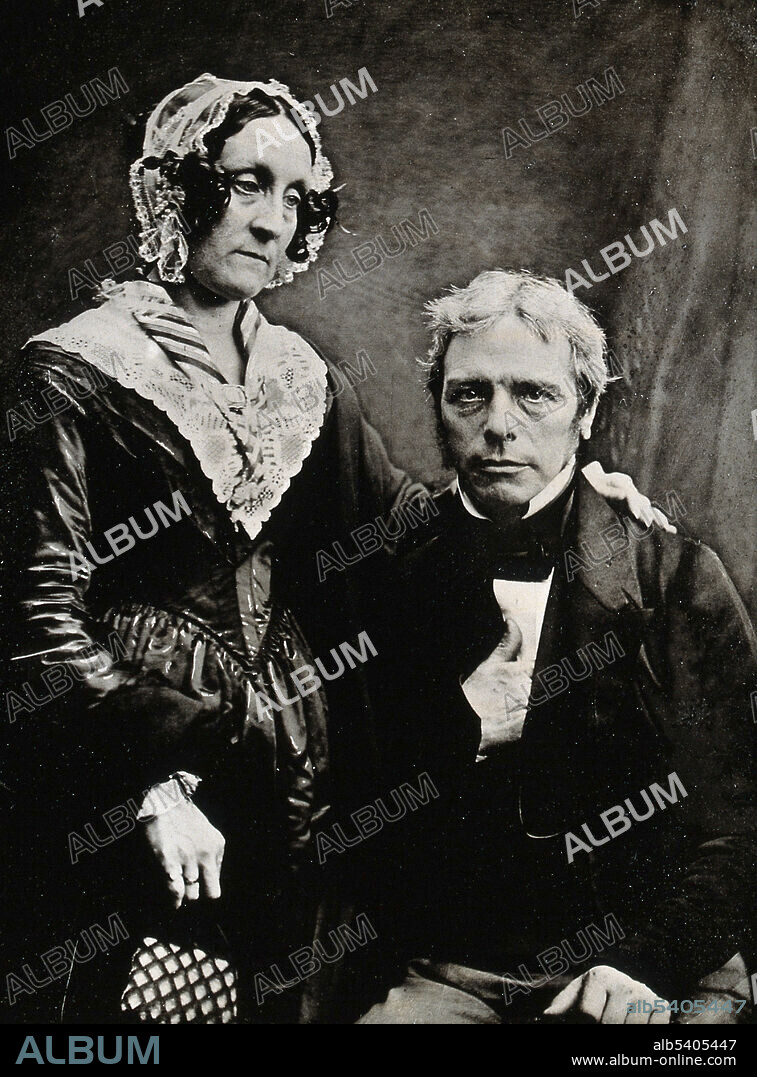alb5405447
Sarah and Michael Faraday

|
Add to another lightbox |
|
Add to another lightbox |



Buy this image.
Select the use:

Title:
Sarah and Michael Faraday
Caption:
Michael Faraday and his wife, Sarah Faraday. Faraday married Sarah Barnard (1800-79) in 1821. They met through their families at the Sandemanian church, and he confessed his faith to the Sandemanian congregation the month after they were married. They had no children. Michael Faraday (September 22, 1791 - August 25, 1867) was an English chemist and physicist who contributed to the fields of electromagnetism and electrochemistry. He experimented with electricity and magnetism, proposing that magnetism was a circular force. He also discovered magnetic optical rotation, electromagnetic induction, invented the dynamo, perfected the Bunsen burner, and formulated the second law of electrolysis. Author of "Chemical Manipulation", Faraday was self-trained and contributed to the fields of electromagnetism and electrochemistry after an apprenticeship Davy's lab. The farad (F) is named after him. As a chemist, Faraday discovered benzene, investigated the clathrate hydrate of chlorine, invented the system of oxidation numbers, and popularized terminology such as anode, cathode, electrode, and ion. Photograph by Henry Dixon & Sons Ltd, undated.
Credit:
Album / Science Source
Releases:
Image size:
3214 x 4350 px | 40.0 MB
Print size:
27.2 x 36.8 cm | 10.7 x 14.5 in (300 dpi)
Keywords:
19TH CENTURY • BW • CELEBRITIES • CELEBRITY • CHEMIST • ELECTROCHEMIST • ENGLISH • FAMOUS PEOPLE • FAMOUS • HISTORY • INVENTOR (MALE) • INVENTOR • MAN • MEN • MICHAEL FARADAY • MRS FARADAY • NATURAL PHILOSOPHER • PERSONALITY • PHYSICIST • SARAH BARNARD • SCIENCE • WIFE


 Pinterest
Pinterest Twitter
Twitter Facebook
Facebook Copy link
Copy link Email
Email
